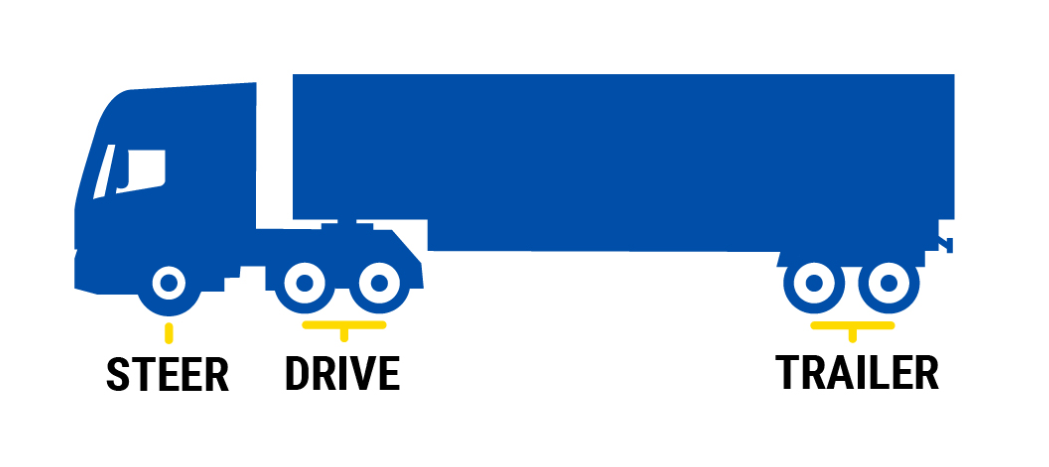A truck’s steer tyres are specifically designed for the front axle on your truck. In this position, the steer tyres take all the stresses and strains of turning your vehicle. For this reason, they need to have optimal handling performance for precise and smooth steering.
Steer axle tyres also need to have excellent aquaplaning resistance properties. They will be your first tyres to hit wet roads, so need to be able to disperse water effectively.
Lastly, steer tyres will also have the biggest impact on comfort in the cabin. To maximise comfort, your steer axle tyres should minimise external noise and vibrations. This will ensure your drivers have a quiet and comfortable ride.





